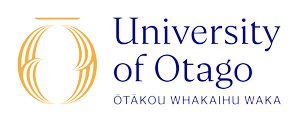Acute otolaryngological presentations in Northland
Otorhinolaryngology, head and neck surgery (ORL) diagnoses and treats disorders of the ear, nose, throat, head and neck which can be commonly seen across a range of medical specialities. Rural patients experience a burden of ORL diseases and face greater barriers to healthcare than their urban counterparts. We aim to provide information on the diagnoses of rural patients presenting with ORL symptomatology to provide data that may be useful in targeting resources and training towards rural patients.
2023-06-26Heaven CL, McGuinness MJ, Shetty S. Acute otolaryngological presentations in Northland, New Zealand: analysed with respect to geography and rurality. New Zealand Medical Journal. 2023;136(1575).
This study shows that a large percentage of ED/hospital presentations with otolarngeal diagnoses in Northland are dealt with by rural hospitals. Few patients were transferred to an urban hospital (Whangarei) but there were a higher percentage of patients ‘admitted’. I suspect these findings might reflect the after-hours care provided by rural hospitals rather than urgent care facilities and the geography of the region and that patients live at a distance to the rural hospital.
Abstract
Aim
Otorhinolaryngology, head and neck surgery (ORL) diagnoses and treats disorders of the ear, nose, throat, head and neck which can be commonly seen across a range of medical specialities. Rural patients experience a burden of ORL diseases and face greater barriers to healthcare than their urban counterparts. We aim to provide information on the diagnoses of rural patients presenting with ORL symptomatology to provide data that may be useful in targeting resources and training towards rural patients.
Methods
A 6-year retrospective study was performed between 1 January 2015 to 31 December 2020. The Northland District Health Board (NDHB) data warehouse was searched using ICD-10 codes relevant to ORL. The study included any patient acutely presenting to an NDHB hospital with an ORL diagnosis. Patients with a diagnosis that was not related to ORL, a non-acute presentation, or a diagnosis not usually managed by hospital ORL services were excluded.
Results
Five thousand, five hundred and thirty-four presentations in 4,671 individual patients were included in the study. The mean age of patients was 35.1 years (SD 26.58). Two thousand, three hundred and twenty-six (49.8%) patients were female and 2,345 (50.2%) were male. One thousand, nine hundred and sixty-five (42.1%) were Māori and 2,699 (57.8%) were non-Māori. Median decile was 8 (4 IQR). Two thousand and seventy-seven (44.5%) patients were classified as rural and 2,594 (55.5%) as urban. The most common presentation was epistaxis with 16.8% (n=927/5534) of total presentations. The four next most common presentations were otological. There was a total of 224 complications including post-operative bleed, post-operative infection, and other post-operative complications. There was a significant difference in the rate of discharge with 1,819/2,430 (74.9%) rural patients and 2,518/3,104 (81.1%) urban patients being discharged directly from the emergency department (ED) (p<0.001).
Conclusion
This retrospective study provides a picture of acute ORL presentations in Northland patients, analysed with respect to geography and rurality. It highlights the large volume of ORL patients who are seen and managed by rural and ED physicians, and the importance of rural provision of care in Northland. These findings support the need for targeting resources and training to centres treating rural patients for the management and treatment of ORL conditions.
